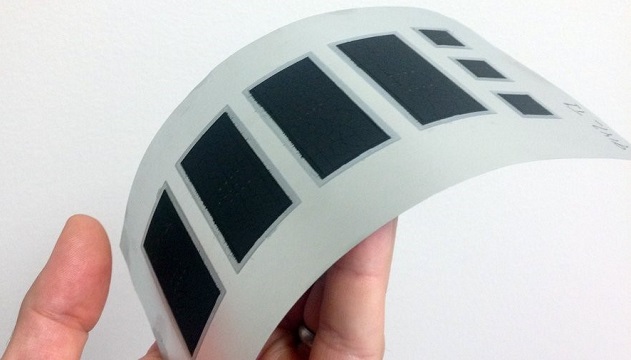The flexible and thin energy storage device which can be used as a battery is called a paper battery. It is a lightweight device made up of carbon nanotubes emboldened on paper (cellulose). It is formed by the combination of cellulose with carbon nanotubes. This paper battery can also be used as a capacitor.
The paper battery consists of the property of a battery – high-energy storage capacity and property of a supercapacitor – high-energy density and thus, produces extreme power.


Construction of paper battery can be done by:
1. The first method involves fabricating zinc and manganese dioxide-based cathode and anode. The batteries are printed onto paper using a standard silk screen printing press.
This paper is infused with aligned carbon nanotubes which are used as an electrode. This paper is dipped in a solution of ionic liquid which acts as the electrolyte.
2. The second method is a bit complex and involves growing nanotubes on a silicon substrate. The gaps in the matrix are then filled with cellulose and once the matrix is dried, the combination of cellulose and nanotubes is peeled off. Thus sheets of paper consisting of layers of carbon nanotubes are created. Two such sheets are combined to form a supercapacitor with an ionic liquid-like human blood, sweat, or urine being used as an electrolyte.
3. The third is a simple method and can be constructed in a laboratory. It involves spreading a specially formulated ink of carbon nanotubes over a rectangular sheet of paper coated with an ionic solution. A thin film of lithium is then laminated on the other side of the paper. Aluminium rods are then connected to carry current between the two electrodes.
4. The fourth method involves coating the substrate of stainless steel with carbon nanotubes. The coated substrate is then dried at 80 degrees Celsius for five minutes, after which the material is peeled off. A pair of films is used for each paper battery with each film being pasted to different electrolytes like LTO and LCO. A paper is then sandwiched between the two films using glue.
The conventional rechargeable batteries which we use in our day-to-day life consist of various separating components that are used for producing electrons with the chemical reaction of a metal and electrolyte. If once the paper of the battery is dipped in ion-based liquid, then the battery starts working i.e., electricity is generated by the movement of electrons from the cathode terminal to the anode terminal. This is due to the chemical reaction between the electrodes of the paper battery and liquid. Due to the quick flow of the ions within a few seconds (10sec) energy will be stored in the paper-electrode during the recharging. By stacking various paper-batteries upon each other, the output of the paper battery can be increased.
As the paper batteries are connected very closely for increasing their output, there is a chance of occurring short between the anode terminal and cathode terminal. If once the anode terminal contacts the cathode terminal, then there will be no flow of current in the external circuit. Thus, to avoid the short circuit between anode and cathode a barrier or separator is needed, which can be fulfilled by the paper separator.
Paper batteries have a long-lasting time. They are non-toxic as they do not involve harmful chemical reactions. They are flexible and can be folded or cut without any effect on their efficiencies. This is because they are made up of materials like cellulose and carbon nanotubes which have high tensile strength. They are disposable as they are made up of cellulose which is bio-degradable and non-toxic. They can be used in harsh climate conditions like heat and cold. This is because the electrolyte does not involve water which makes the battery operation in the range of -73 to 149 degrees Celsius. They utilize carbon nanotubes, which are one of the most highly efficient conductors of electricity.
The paper battery can be used for various applications as it facilitates advantages such as folding, twisting, folding, crumpling, shaping, and cutting without affecting its efficiency. As the paper batteries are the combination of cellulose paper and carbon nanotubes, which facilitates advantages of long term usage, steady power, and bursts of energy. These types of paper batteries are estimated to use for powering the next-generation vehicles and medical devices.




